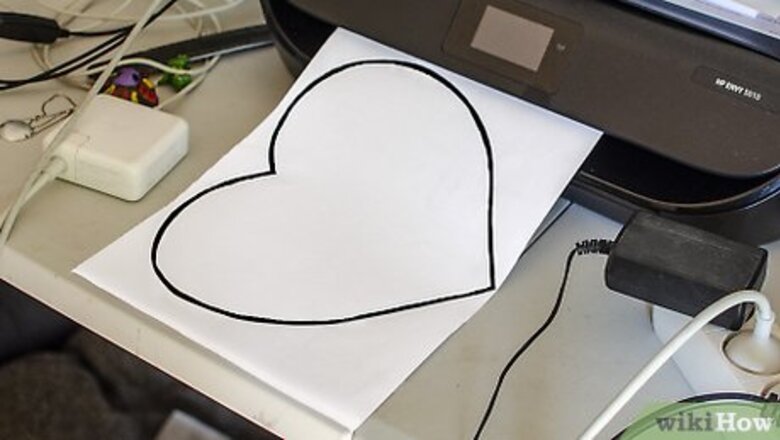
views
Marking Your Cuts
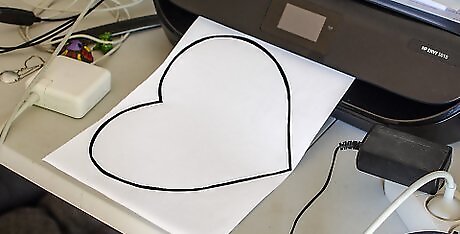
Print an image and tape it to the cork board to create a template. If you’re cutting shapes out, print the image on a piece of printer paper. Then, place it on the board where you want to cut it out. Use regular clear tape to attach it to the corkboard and hold it in place.Tip: If you plan on doing a lot of cork-based crafts, buy a die cutter and some templates. A die cutter is a small machine with a crank wheel that will punch shapes out of the cork board using the templates you choose. This is probably the best way to mass-produce cork board crafts! Make sure that you smooth any wrinkles out before taping it down!
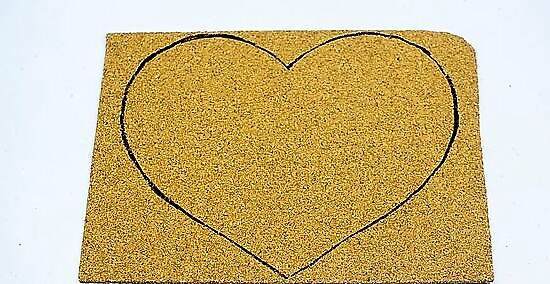
Trace a stencil or object to transfer an outline if you prefer. If you have an actual object or stencil that you want to use, set it down on the cork board and trace it using a fine-tipped permanent marker. You can try cutting around the shape or stencil with your utility knife if you prefer, but you’ll risk cutting the stencil up or damaging your item. You can always draw directly on the corkboard if you want. There’s nothing wrong with doing it freehand if you know what you’re going to cut out.
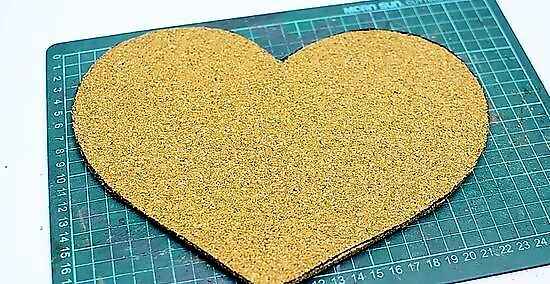
Use a straight edge to cut perfectly straight lines out. If you want to make any perfectly straight cuts, grab a metal ruler. Place the ruler down along the line you want to cut and brace it with your nondominant hand. Then, drag the utility knife along the edge or use the straight edge to guide your scissors to carve a perfect line. Don’t use a plastic or wood straight edge. You may cut out a chunk of the plastic or wood if you do. You can use a paper cutter to make straight cuts on those really thin rolls of cork board.
Slicing Thick Cork with a Utility Knife
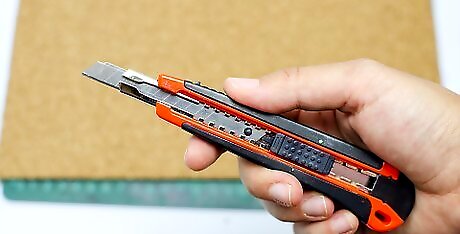
Grab a sharp utility knife to cut cork thicker than ⁄4 in (0.64 cm). If you have thicker cork, like the kind you find in a bulletin board, the easiest way to cut it is with a utility knife. The pen-shaped thinner knives are usually best, but you can use a bigger box cutter-style utility knife if the cork is really bulky. You can use basically any sharp object to cut cork, but a utility knife is the easiest to handle without breaking any chunks of the material off. In a pinch, you can use a non-serrated kitchen knife. This is usually unnecessarily sharp for cork boards, though. This is not the ideal option if you’re cutting wine corks; you’ll want to use scissors or a kitchen knife for those. You can certainly use a utility knife to cut thinner cork if you really want to, but you cannot use scissors to cut thicker cork.
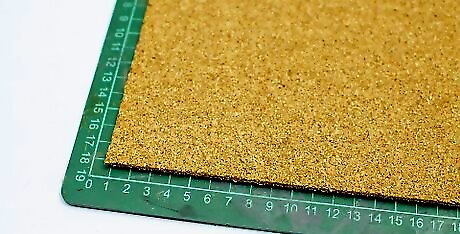
Set a cutting board underneath the cork to protect your furniture. Grab a cutting board and lay it down underneath the cork that you’re cutting to keep your table from getting scratched up by your utility knife. If you’re in a pinch, you can lay down 2-3 sheets of cardboard instead.
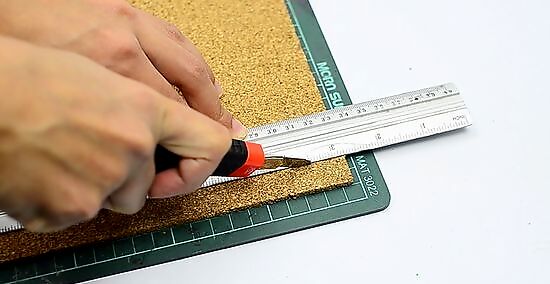
Dig the blade into the cork until you feel the cutting board underneath. To start your cut, use the tip of your knife to puncture the cork board from above. Push the blade down through the cork until you feel the hard surface underneath. If you don’t push all the way through the cork, you may need to make additional cuts.Tip: If you find some thicker cork really difficult to cut, fill a pot with water and turn the heat to medium. If your cork fits in the pot, go ahead and drop it in the water for 2-3 minutes. If it’s too big for the pot, use a pair of tongs to hold the cork over the steam for 3-4 minutes. This will soften the cork and make it easier to cut! Hold the knife with your index finger on top of the handle near the base of the blade and support the knife from the side with your thumb. Tuck your other fingers under the handle to stabilize it.
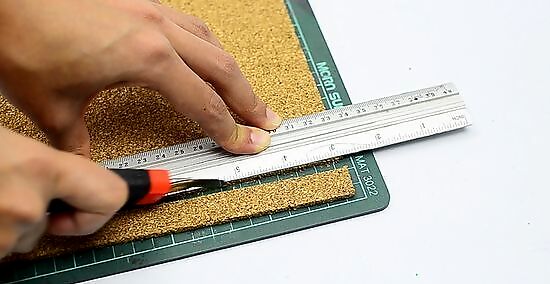
Drag the blade through the cork at a 45-degree angle to make your cut. Pull the handle a towards you as you drag the knife through the cork. Let the blade rest at a 45-degree angle to make it easier to slice your way through the board. Continue dragging the blade until you’ve completed the cut. If the cut doesn’t go all the way through, simply make the cut again and use the groove you created from the first cut as a track for the second attempt. It may take 2-3 cuts to get all the way through a thick piece of cork. You can turn the blade by rotating your wrist as you move it if you need to make an uneven cut.
Using Heavy-Duty Scissors for Thin Cork
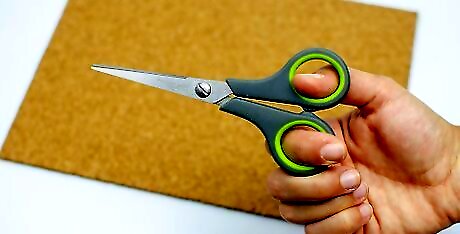
Grab some sharp scissors to cut cork thinner than ⁄4 in (0.64 cm). Scissors are probably the easiest option if you’re cutting that thin cork that you find rolled up for shelving or craft projects. You can use a utility knife if you prefer, but this thinner cork is more likely to get caught on the blade of a utility knife if you don’t brace it while you cut. Any pair of scissors should work for this so long as the blades are sharp and they aren’t serrated.
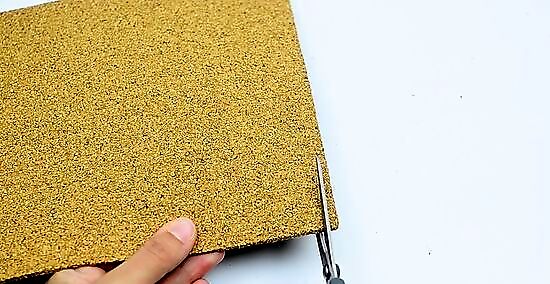
Use the scissors to cut through the cork. Hold the cork in your nondominant hand and open the blades of the scissors. Press them against the edge of the cork and slowly close the handles to cut through the board. This feels kind of like cutting thin cardboard, so it shouldn’t be particularly hard to cut.Warning: Keep your fingers at least 3 inches (7.6 cm) away from the scissor blades to avoid cutting yourself.
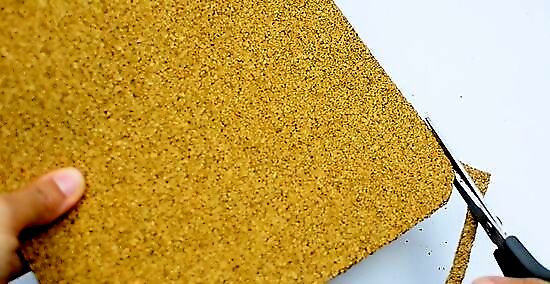
Rotate the cork in your hand to change the angle of your cut. You can turn the scissors to make a variety of cuts but it’s a lot harder than simply turning the cork board itself. When you’re making a round or angular cut, turn the cork not the scissors. You’ll find it much easier to cleanly slice through the board.














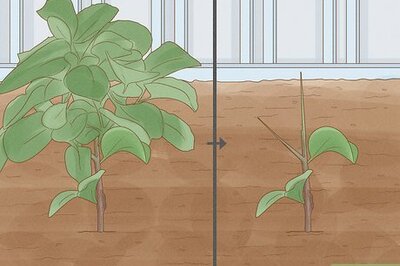




Comments
0 comment